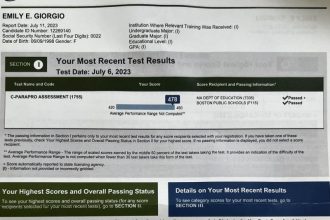What is z-line in endoscopy? It’s a crucial anatomical landmark in the esophagus. The z-line marks the junction between the esophagus and the stomach, aiding clinicians in diagnosing conditions like acid reflux and Barrett’s esophagus. Understanding this defining feature can greatly enhance the accuracy of endoscopic examinations. Let’s delve deeper into the significance of the z-line in endoscopy.
Understanding the Z-line in Endoscopy: A Detailed Exploration
Welcome to our comprehensive guide to the Z-line in endoscopy. If you’ve ever heard this term during a medical discussion or procedure and wondered what it means exactly, you’re in the right place. In this article, we will delve into the fascinating world of endoscopy and unravel the mysteries surrounding the Z-line.
What is Endoscopy?
Before we can fully grasp the concept of the Z-line in endoscopy, let’s first understand what endoscopy is all about. Endoscopy is a minimally invasive procedure that involves inserting a long, flexible tube equipped with a camera through the mouth or other natural body openings to examine the interior of organs such as the digestive tract.
Doctors use endoscopy to investigate and diagnose various conditions affecting the gastrointestinal system, such as ulcers, polyps, and inflammation. During an endoscopic procedure, the physician can visualize the internal structures of the body in real time, allowing for accurate assessment and treatment planning.
Introducing the Z-line
Now, let’s focus on the star of our discussion – the Z-line. In endoscopy, the Z-line refers to a critical anatomical landmark located in the esophagus, specifically at the junction where the esophagus meets the stomach. This junction is known as the gastroesophageal junction (GEJ).
The Anatomy of the Z-line
To better understand the Z-line, let’s break down its anatomy. The Z-line marks the transition between the squamous epithelium of the esophagus and the columnar epithelium of the stomach. This transition is crucial because it delineates the boundary between two distinct types of tissue.
At the Z-line, the esophageal mucosa, which is lined with squamous epithelium, meets the gastric mucosa, which is lined with columnar epithelium. This change in mucosal lining is essential for protecting the esophagus from the corrosive effects of stomach acid and other digestive enzymes.
Significance of the Z-line in Endoscopy
The Z-line plays a vital role in endoscopy as it serves as a reference point for physicians conducting upper gastrointestinal endoscopic procedures. By locating and carefully examining the Z-line, doctors can assess the health of the gastroesophageal junction and detect any abnormalities that may indicate underlying conditions.
During an endoscopic examination, the Z-line helps the endoscopist determine the precise location where the esophagus ends and the stomach begins. This information is crucial for diagnosing conditions such as gastroesophageal reflux disease (GERD), Barrett’s esophagus, and hiatal hernias.
Common Conditions Affecting the Z-line
Now that we understand the importance of the Z-line in endoscopy, let’s explore some of the common conditions that can affect this critical anatomical landmark.
Gastroesophageal Reflux Disease (GERD)
GERD is a chronic digestive disorder characterized by the reflux of stomach acid into the esophagus, leading to symptoms such as heartburn, chest pain, and regurgitation. In individuals with GERD, the Z-line may be disrupted or displaced due to repeated exposure to gastric acid, resulting in inflammation and irritation of the esophageal mucosa.
During an endoscopic examination of a patient with suspected GERD, the presence of changes in the Z-line, such as erosion or redness, can provide valuable diagnostic information to the physician.
Barrett’s Esophagus
Barrett’s esophagus is a condition in which the normal squamous epithelium of the esophagus is replaced by abnormal columnar epithelium, typically as a result of long-standing GERD. The Z-line plays a crucial role in diagnosing Barrett’s esophagus, as the presence of columnar epithelium extending beyond the Z-line is a key indicator of this condition.
Patients with Barrett’s esophagus are at an increased risk of developing esophageal adenocarcinoma, a type of cancer. Regular endoscopic surveillance of the Z-line is essential for monitoring patients with Barrett’s esophagus and detecting early signs of cancerous changes.
Hiatal Hernia
A hiatal hernia occurs when a portion of the stomach protrudes through the diaphragm into the chest cavity. This displacement can affect the position of the Z-line and alter the normal anatomy of the gastroesophageal junction. During an endoscopic examination, the presence of a hiatal hernia can be visualized, and its impact on the Z-line evaluated.
In conclusion, the Z-line is a crucial anatomical landmark in endoscopy that holds significant diagnostic value for evaluating the health of the gastroesophageal junction. By understanding the role of the Z-line and its association with various gastrointestinal conditions, patients and healthcare providers can work together to achieve optimal outcomes through early detection and treatment.
Next time you hear about the Z-line in the context of an endoscopic procedure, you’ll have a solid understanding of its importance and relevance. Stay informed, stay healthy!
Examining the normal Z-line
Frequently Asked Questions
What is the z-line in endoscopy?
In endoscopy, the z-line refers to the junction between the esophagus and the stomach. It marks the transition from the squamous epithelium of the esophagus to the columnar epithelium of the stomach.
How is the z-line identified during an endoscopy procedure?
During an endoscopy procedure, the z-line is identified visually by the endoscopist as a distinct landmark where the color and texture of the esophageal lining changes to that of the stomach lining.
Why is the z-line important during endoscopy examinations?
The z-line is important in endoscopy examinations as it serves as a reference point for determining the location of the gastroesophageal junction and assessing for any abnormalities or conditions such as Barrett’s esophagus.
Can abnormalities at the z-line indicate any health issues?
Yes, abnormalities at the z-line can indicate health issues such as gastroesophageal reflux disease (GERD), Barrett’s esophagus, or other conditions that may require further evaluation or treatment.
Final Thoughts
In conclusion, the z-line in endoscopy is an important anatomical landmark that helps in identifying the junction between the esophagus and the stomach. It appears as a distinct change in color and texture under the endoscope. Understanding the z-line is crucial for accurate diagnosis and treatment of esophageal disorders. Endoscopists rely on the z-line as a reference point during procedures to ensure precision and effectiveness. Mastering the recognition and interpretation of the z-line is fundamental for all individuals involved in endoscopy.






